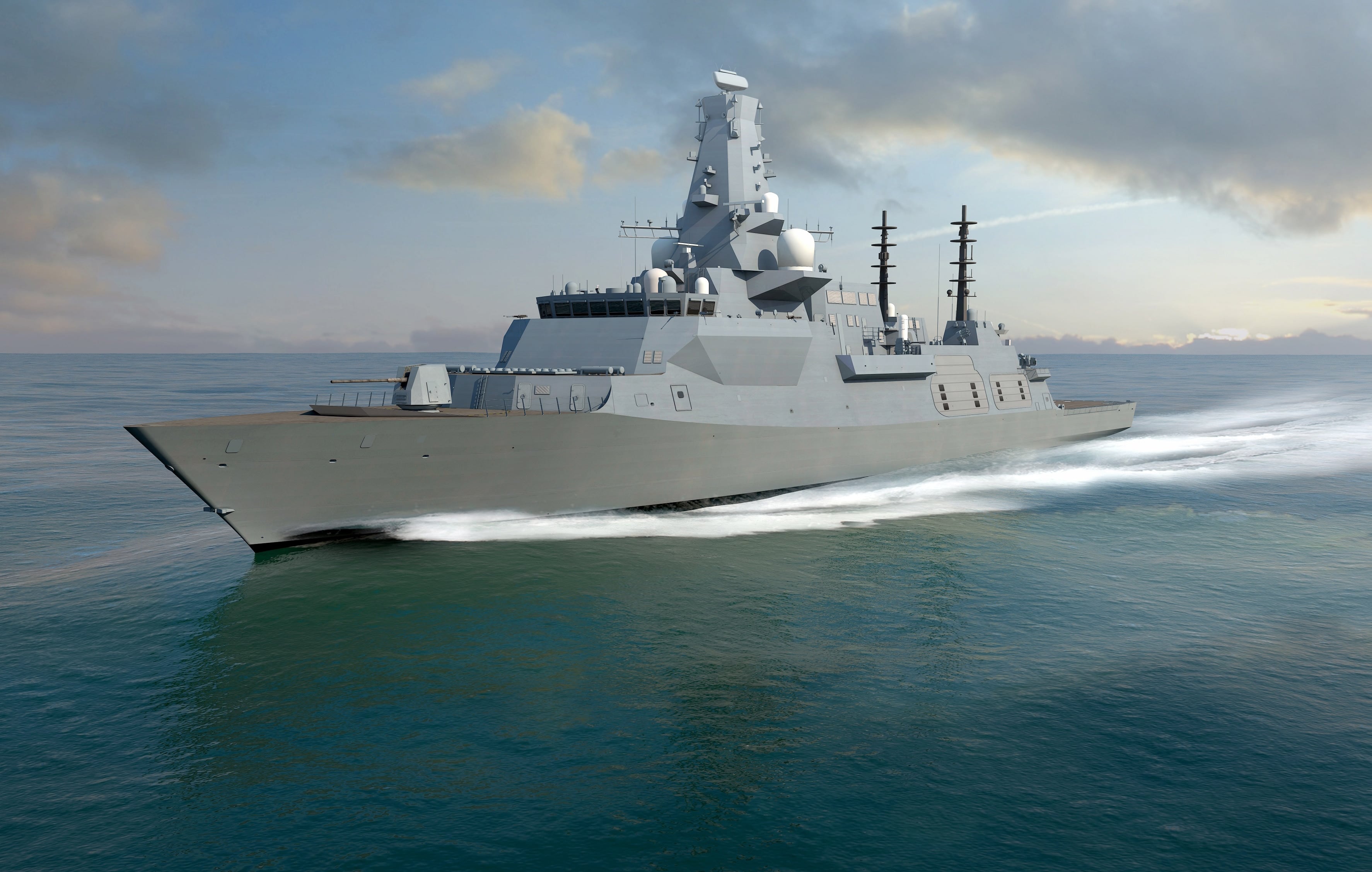LONDON ― Britain is preparing to launch a competition early next month to come up with a design for a new class of light frigates for the Royal Navy.
Shipbuilding bosses and other executives have been invited to a central London meeting for Sept. 7 to be briefed on the broad outline of the Type 31 light frigate program by ministers as well as officials with the Navy and the Ministry of Defence’s Defence Equipment and Support agency, according to the government’s Defence Contracts Bulletin.
The Type 31 program is a centerpiece of the Conservative governments yet-to-be-published national shipbuilding strategy. It’s possible the strategy, designed to lay the foundation of a modern and efficient naval shipbuilding sector, could be unveiled ahead of the Sept. 7 briefing once Parliament emerges from its summer recess on Sept. 5.
The MoD declined to comment on the timing of the shipbuilding strategy’s publication or offer any details on the Type 31 program announcement beyond saying: “The National Ship Building Strategy will make clear our plan for Type 31 and will be published in due course.”
The government announced plans to build a fleet of at least five light general purpose frigates in the 2015 Strategic Defence and Security Review, or SDSR, and has since been conducting early concept and other work on the Type 31.
The Defence Contracts Bulletin said the program would be innovative and agile.
A report on the shipbuilding strategy produced for the government last year by industrialist Peter Parker recommended the warships could be block built by shipyards around the U.K. and assembled at BAE System’s yards in Glasgow, Scotland.
The competition to build the Type 31 is restricted to British companies.
Babcock International, BAE Systems, BMT Defence Services and a small design consultancy known as Stellar Systems are the companies likely to submit designs when the competition opens.
It’s expected the MoD will call the light frigate the Type 31e to emphasize the importance of the warship’s appeal in export markets to future shipbuilding capabilities in the U.K.
RELATED

Details of the program are sparse; but after nearly two years of concept work, the MoD appears to have finally cranked up progress with three separate events within 20 days aimed at laying out the plan to acquire the warships.
The Defence Contracts Bulletin notice said the Sept. 7 announcement will be an industry briefing covering details of the program, including the pre-procurement and procurement phases. This will be followed with the MoD’s ship acquisition team outlining further program details and holding discussions with industry at the upcoming DSEI exhibition in London in mid-September and industry day briefings on Sept. 27 and 28.
The British want the first of the Type 31 frigates in the water in time to replace the Type 23 frigate HMS Argyll when it is pensioned off in 2023, said a program official who spoke on condition of anonymity.
Analysts in the U.K. said the timeline, if confirmed, was daunting. “Realistically, it’s just not going to happen,” one analyst offered.
A challenging timeline could constrain the Royal Navy to buy a stretched version of existing ships rather than pursue newer designs like BMT’s Venator-110 frigate, which is well-regarded among some Royal Navy officers.
Stretched warships on offer are likely to include BAE’s Cutlass design ― based on the Al-Shamikh corvette it built for the Royal Navy of Oman ― and a tweaked version of the Samuel Beckett-class offshore patrol vessels being built by Babcock for the Irish Naval Service.
The Type 31 frigates and eight new Type 26 anti-submarine warfare frigates are planned to replace the British Royal Navy’s Type 23 fleet by the mid-2030s.
The MoD originally planned to build 13 of the Type 26 vessels to replace the Type 23 ships on a one-for-one basis, but the ministry ended up cutting the number to eight in the 2015 SDSR, saying it planned to replace the axed ships with the lighter, cheaper Type 31.
The SDSR said that by the 2030s it could increase the size of the Type 31 fleet beyond five warships, helping to rebuild a Royal Navy destroyer and frigate fleet that has shrunk to just 19 vessels.
In May, media reports said the MoD was looking to buy six Type 31 frigates at a cost of £2 billion (U.S. $2.56 billion), but that remains unconfirmed.
The program official said the unit cost that the MoD was working toward for the Type 31 frigates was closer to £250 million than the £330 million reported by the media.
The prospect of a cheap and cheerful frigate has raised concerns among analyst’s that the warships will only be suitable for constabulary duties like anti-smuggling and piracy prevention rather than front-line war fighting.
In a briefing paper earlier this year, Peter Roberts, the director of military sciences at the Royal United Services Institute think tank in London, said senior naval leaders appeared to agree with Parker’s plan to “build warships for functionality (that is, speed, size and numbers), without considering the needs of combat.”
“A resurgent Russia, an unapologetic and belligerent China, and a strident Iran are all challenging the world order at sea with sophisticated and well-armed ships and submarines. Meeting these with offshore patrol vessels and under-equipped corvettes hardly seems prudent,” Roberts said.
BAE is building five lightly armed offshore patrol vessels for the Royal Navy alongside the first of three Type 26 frigates ordered by the MoD earlier this summer at BAE’s yards in Glasgow.
Andrew Chuter is the United Kingdom correspondent for Defense News.







